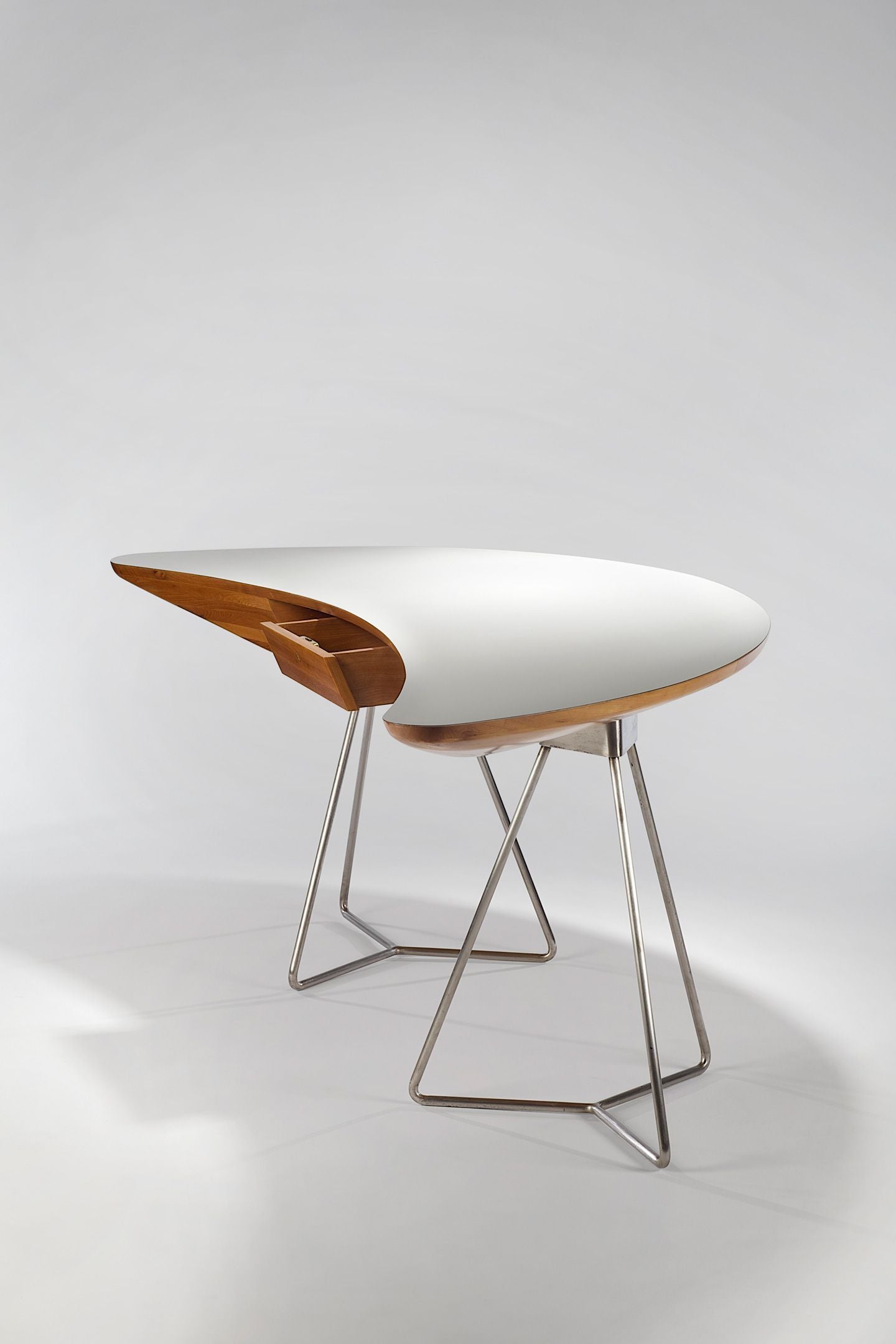Object of My Affection
A Unique Desk by Geneviève Dangles & Christian Defrance
Lee F Mindel FAIA, architect-extraordinaire, shares the latest on what's catching his eye
As we look in the rearview mirror of the previous century, seldom do works resonate as truly one-of-a-kind moments in decorative arts history, as moments that remain as relevant now. An exception is this extraordinary desk crafted in 1958 by French design team Dangles and Defrance and presented today by New York's Demisch Danant.
Geneviève Dangles and Christian Defrance, both born in 1929, belong to the generation of innovative, progressive French designers who emerged in the 1950s, including Joseph André Motte, Pierre Guariche, Pierre Paulin, and Alain Richard. They are less known than the stars of the period—Charlotte Perriand and Jean Prouvé, for example—despite their strong influence on the emergence and development of industrial design in France.

Dangles and Defrance, like many of their contemporaries, adopted design principles rooted in the use of industrial tools and materials, guided by a commitment to simple forms and pure lines, under the influence of the UAM (French Union of Modern Artists), which promoted modernist design in France since the 1930s. Dangles and Defrance, however, classically trained as sculptors and woodworkers, began to forge their own voice amid prevailing approaches to the new industry of modern furniture.
Intuitively embracing other waves of design—like the Italian freedom-of-form and Surrealism found in the work of Carlo Mollino, Gio Ponti, and Piero Fornasetti, combined with Scandinavian craftsmanship and the material virtuosity of the Aaltos and Tapio Wirrkala, along with the biomorphic minimalism of Noguchi—the couple shifted toward organic forms, pliable materials, and artwork-like design that embodied a distinctly humanist approach.
Dangles and Defrance quickly earned recognition among their peers for their more poetic and organic silhouettes and for using natural materials like rattan to create free forms. In the late '50s, new materials like molded plywood, molded foams, and fabric-like Jersey allowed the designers to express a new vocabulary of shapes in order to accommodate new definitions of modern comfort. Pierre Paulin was working in the same period and in the same direction with the Dutch company Artifort.

In 1953, Dangles and Defrance began their long-lasting exclusive collaboration with French design house BUROV, creating high-end furniture collections for premium homes and luxury lifestyles, including seating—which was their main forte and signature between 1957 and 1977. But in 1958, Mr. and Mrs. Burov commissioned the couple to design their Paris apartment, including all furniture, seating, and this remarkable desk. The custom design of this one desk stands out in its uniqueness, with a groundbreaking design that points to a high level of sensitivity to the international zeitgeist of design.
This was not a production piece, as was the norm for the time period; it was built with the same level of craftsmanship as traditional Scandinavian furniture. Reflecting an intimate humanism, the desk's sinuous curvature and hollowness resembles the body of a Stradivarius violin, while the strength of the wood and Formica layers echoes the sturdiness and utility of a sailboat. The boomerang shape is highly organic, at a time when Dangles and Defrance's colleagues were still experimenting with octagonal forms. The desk transcends its function to become an artwork and a hallmark of the design shifts that would come to characterize the second half of the 20th century. ◆

This Desk by Dangles & Defrance is available in the Design Miami/ Shop through Demisch Danant.
